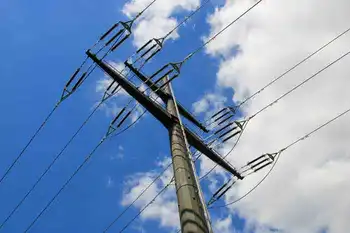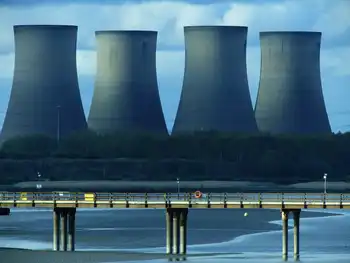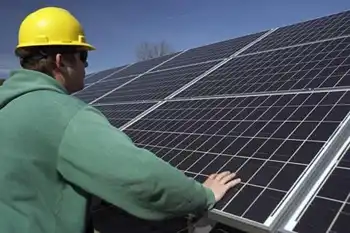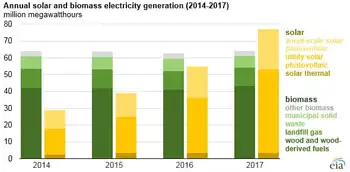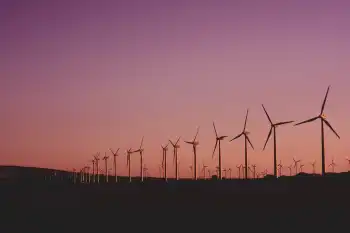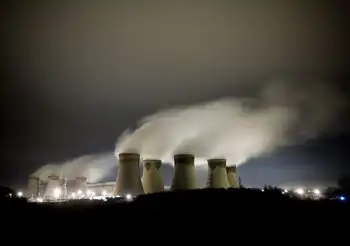Congress abandoning Obama clean energy goals
By Associated Press
NFPA 70b Training - Electrical Maintenance
Our customized live online or in‑person group training can be delivered to your staff at your location.

- Live Online
- 12 hours Instructor-led
- Group Training Available
Both the House and Senate are considering legislation that would establish the first national requirement for electric utilities to generate a certain percentage of their power from renewable energy — from wind turbines and solar cells to biomass and geothermal sources.
To gain wider congressional support, the proposals have been whittled back. They now pale in comparison to what Obama repeatedly has maintained is feasible and necessary to shift the nation away from coal and other fossil fuels and to clean energy sources. This shift, he argues, is needed to combat climate change and make the nation more energy independent.
The Senate Energy and Natural Resources Committee is expected to approve energy measures that call for 15 percent of the country's power to come from renewable sources by 2021. A huge climate bill, likely to be considered in the coming weeks in the House, would require 20 percent renewable energy use by 2020.
Nothing near that amount will actually be achieved by the mandate — or even required — because of compromises made to exempt some utilities and allow others to substitute efficiency improvements for a large chunk of the renewable energy requirement.
By contrast, Obama — both in the presidential campaign and since occupying the White House — has called for a much more aggressive shift to renewable energy. He set a goal of 10 percent renewable energy use by power producers by 2012 and 25 percent by 2025.
The bills before Congress would require a modest 3 to 6 percent renewable energy use by most utilities over the next three years. Currently, total U.S. renewable energy use for power generation is about 3 percent, not counting hydroelectric power.
Sponsors of the Senate and House renewable energy bills had wanted a more aggressive approach, but have had to accommodate a string of compromises to garner the needed support for passing any kind of national mandate.
"I urged the committee to adopt a stronger standard and we clearly didn't have the votes for that," says Sen. Jeff Bingaman, D-N.M., chairman of the Senate energy panel. Bingaman, who wanted at least a 20 percent mandate, said he hopes the measure can be strengthened when it is considered by the full Senate.
In what is viewed by renewable energy advocates as a major weakening of the mandates, the House bill allows utilities to meet 40 percent of the requirement by adopting energy efficiency programs. The Senate proposal would allow 25 percent of its target to be met by efficiency improvement.
But the measures have been diluted even more by other provisions.
Both bills, for example, would exempt most publicly owned utilities that account for nearly 10 percent of the nation's electricity.
The measures also would scale back the mandate if a utility builds a coal plant that can capture carbon dioxide, builds a new nuclear power plant, or increases power generation from an existing reactor.
Since the full impact of the requirement won't be felt for a dozen years, there's a good likelihood such plants will be built.
Some of the most outspoken opponents to the national renewable energy standard have been lawmakers and utilities from the Southeast, who argue the region does not have the wind and other renewable energy sources needed to meet the national mandates.
Marchant Wentworth of the Union of Concerned Scientists said that the exemptions and other provisions amount to a "backdoor way of reducing the requirement." He said when all the fine print is taken into account, the Senate proposal may require as little as 8 or 9 percent renewable energy and the House version only slightly more.
Mark Sinclair, whose Clean Energy States Alliance works with state renewable energy programs, maintains that the congressional mandates "are very weak and really will not require any additional renewables beyond what states already are doing."
Sinclair cites an analysis by the National Renewable Energy Laboratory that says the national mandates being considered by lawmakers would in some cases result in less renewable energy being used by 2030 than what is anticipated under existing state requirements and from incentives from Obama's economic recovery program.
"It will be meaningless. It's just a gesture," says Sinclair of the bills before the House and Senate.
Meanwhile, House Republicans, many of whom opposed a federal electricity mandate, offered an alternative energy plan that would create a fund to be used to spur investment in renewable energy. The fund would use money from expanded offshore oil and gas development. The GOP plan also calls for building 100 new nuclear power plants over the next 20 years.
Many utilities eye wind power as the most likely way to meet future renewable energy requirements.
Ironically, a new report says that because of climate change, wind speeds are diminishing across parts of the United States, including a 10 percent drop in the Midwest over the last decade. The number of low or no wind days also has been increasing, according to the report by a team of scientists at Indiana and Iowa State universities.





